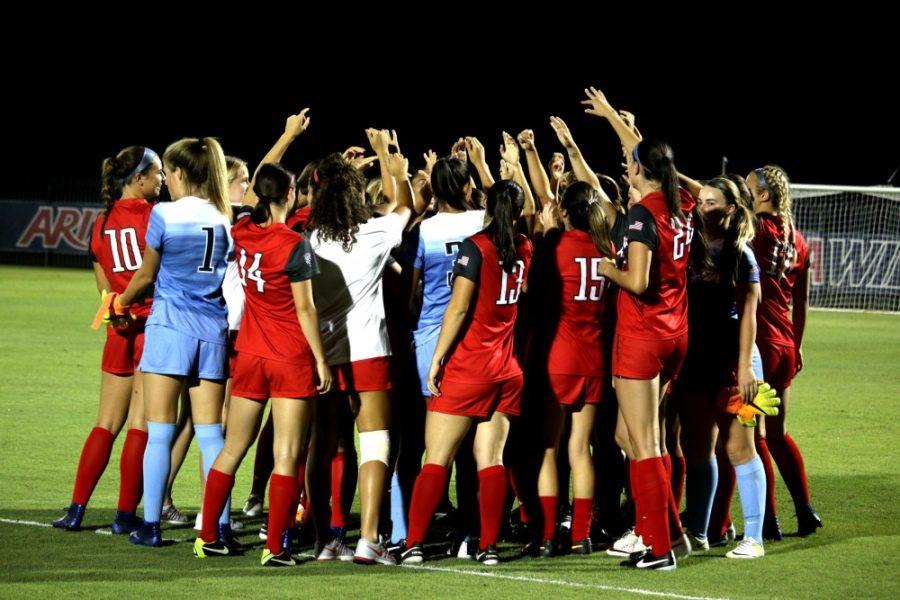Teams of mathematicians are looking to become the new MVPs of UA’s varsity sports programs. In a recently launched collaborative effort between the athletics department and the department of mathematics, UA is aiming to improve the performance of its athletes through the development of a sports statistics research program.
This semester, faculty and graduate students in statistics and applied mathematics are guiding undergraduates interested in analyzing data for the men’s basketball, women’s soccer and men’s golf teams. While most professional sports organizations keep detailed statistics to track athletic performance, such meticulous data collection is rare in college sports.
“There are hardly any universities doing this kind of thing,” said David Rockoff, a Ph. D. student in UA’s graduate interdisciplinary degree program. “Just in the past decade or so, sports analytics has gotten to be big at the pro level, but what we’re doing is somewhat groundbreaking at the college level.”
Rockoff helped initiate a relationship between the department of athletics and mathematics along with Moysey Brio, GIDP chair of applied mathematics, Joe Watkins, GIDP chair of statistics, and Ashley Brio, engineer at Raytheon and affiliate member of the mathematics department.
“I went with [Brio and Watkins] to go and talk to the head of the athletics department, Greg Byrne, and try and convince him that we might be of some service,” Rockoff said. “He invited us to talk at the coaches meeting for a couple minutes, just to see if we could get anyone on board, and we did.”
Rockoff noted that the program was initially proposed by Brio and Watkins, who reached out to Rockoff because they knew he was interested in sports analytics.
The end goals of the sports analytics program are twofold. One goal is to give Wildcat athletes a competitive edge on their road to national championships, and the other is to expose undergraduates to the field of statistics, which has limitless applications outside the world of sports.
“I’m a math major, and I actually found out about this research through the department email list,” said Alex Stoken, a math and physics sophomore who works on the project. “I’ve been playing golf since before I could walk and I’ve tried to keep up with the recent statistical advances in the game, so when I saw this opportunity while I was scrolling through the weekly email, I knew I had to apply.”
Specific statistical analysis techniques vary slightly from sport to sport. Rockoff’s work with the women’s soccer team, for example, involves extensive video analysis of individual events such as passes, throw-ins and penalty kicks. Stoken’s research on men’s golf statistics, however, involves a different approach.
“On a day-to-day basis,” Stoken said, “The research looks a lot like scrolling through the web to find solid data. Then, we work with statistics software called R to search for trends in the data, a lot of this is trial and error.”
As with research in any field, sports statistics research can lead to exciting discoveries that compel investigators to carry on with their work.
“The best part is when we make some plots and see things that we don’t expect,” Stoken said. “Then things really get interesting.”
The researchers expect the sports statistics research program to grow going forward, partnering with more varsity sports teams and increasing its number of participants.
“In the future, we may be looking to expand and create more teams that have a mix of skill sets,” Rockoff said. “Each team might consist of someone with a stats background, someone with a programming background and an actual athlete from the team we’re working with.”
Follow Lizzie Hannah on Twitter.








